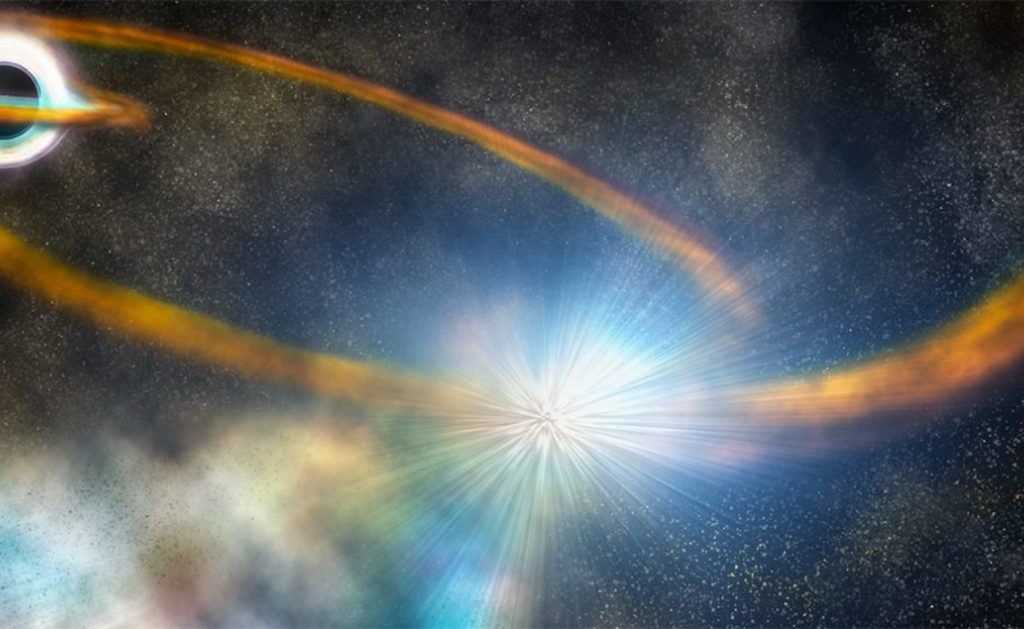The phenomenon of the stars being eaten up by black holes is still not fully revealed. Recently, more light was shed on the topic by a team of astrophysicists who launched a group of stars into a series of black holes and recorded what happened.
This study is collectively based on Einstein’s theory of general relativity and the realistic models of main-sequence star densities. They aim to observe the flares of light that are produced from remote black holes that destroy the ill-fated stars.
The simulations gotten from the observations are mesmerizing.
The main activity starts when a star gets a little too close to the black hole. The black hole has an intense gravitational field, and it starts to deform when the star gets near it. It separates the star through its tidal forces. This means that the black hole elongates the star because of its extreme gravitational pull.
When the star gets so close to it that the tidal force from the black hole causes the material to be removed from the star, it is called a tidal break event.
From this point onward, the star’s fate is set in stone. It does not have an option to escape. It has to be engulfed by the black hole.
However, there is an exception of a few stars that have been able to survive. The simulations, led by astrophysicist Taeho Ryu of the Max Planck Institute for Astrophysics in Germany, were designed to find out what factors contributed to a star’s survival.
Six virtual black holes were created with masses between 100,000 and 50 million times that of the Sun. Each of these black holes then had encounters with eight main sequence stars, with masses between 0.15 and 10 times that of sun.
The main factor that dictated the star’s interaction with the black hole was the star’s initial density. The denser the star, the more likely it is to survive an encounter with a black hole. These have occurred around supermassive black holes 1 million times the mass of the Sun. The highest density stars are yellow and the lowest are blue in the video.
It was also revealed that the partial outages occurred at the same rate as full outages, and the proportion of the star’s mass that is lost can be described with the help of a simple expression.
Deeper studies in the area can reveal more information about the relatively neglected partial disruption events.
The document accompanying the simulations was published in The Astrophysical Journal in 2020.

